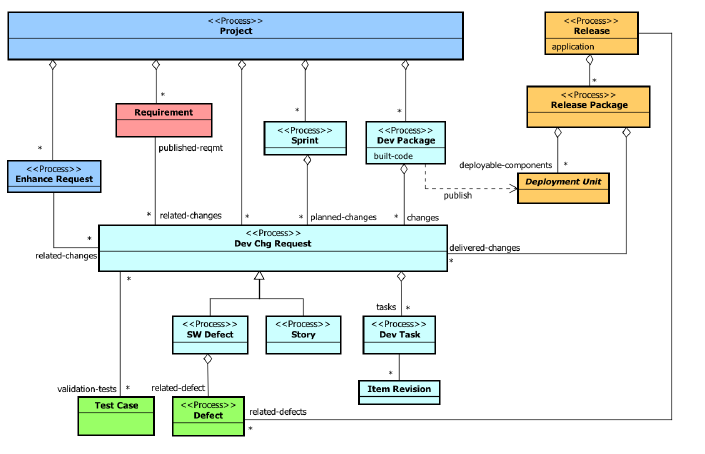
This domain model lays out the primary objects that comprise Development Management, and illustrates their relationships to each other.

The Serena development management model comprises the following objects.
Development change requests capture and track requests for code changes that are submitted into the development organization. These may be in response to defects found during testing, or may be enhancement requests derived from project requirements. As described in the domain model:
Any number of development change requests can be collected into development sprints (or planning intervals).
Change requests can be aggregates into development packages, providing details on updated code to be included in builds.
Development work can be broken down into any number of tasks that are then aggregated up into the change request.
Development requests may be broken down into stories or defects.
Any number of test cases from the Quality Management system may be related to a change request.
A development task is a type of change request that is designed to be assigned to specific developers and worked on. You can associate tasks to specific revisions of items, ensuring traceability between change requests and work. Any number of tasks can be assigned to parent change requests.
A development package is a collection of a change requests to be included in a build for testing or release. Baselines that include the physic files to be built are associated to the development package.
A sprint is an interval of work, with a collection of change requests to be completed associated with it. In Agile development, this collection might be called a backlog. A sprint is a way to organize work into small increments that development teams can work on, one at a time.
A story is a description of a user’s experience with the enhancement or fix that the change request is asking for.
A software defect is an issue that describes a functional problem with software.